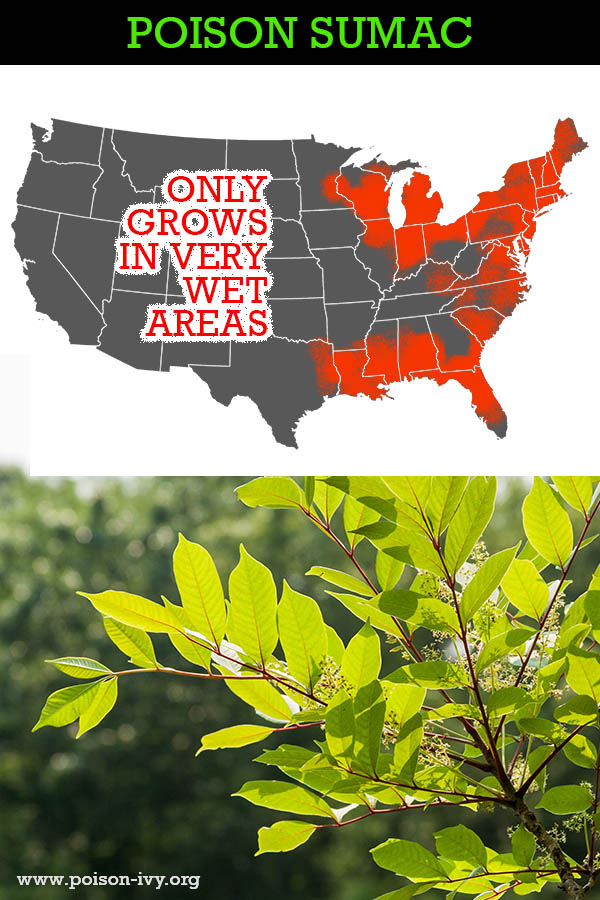Poison sumac, Toxicodendron vernix, is related to the poison ivies and poison oaks, not to the other sumacs.
It is relatively rare compared to the other members of the family. The rash-causing agent, urushiol, is the same, and it causes the same rashes. While poison sumac is rare, when you find it in its typical wetland habitat, you may find quite a bit.
The story goes that there was a lot of it where they cleared the wetland to build Disneyworld in Florida. (This happened before it was made illegal to fill in wetlands.)
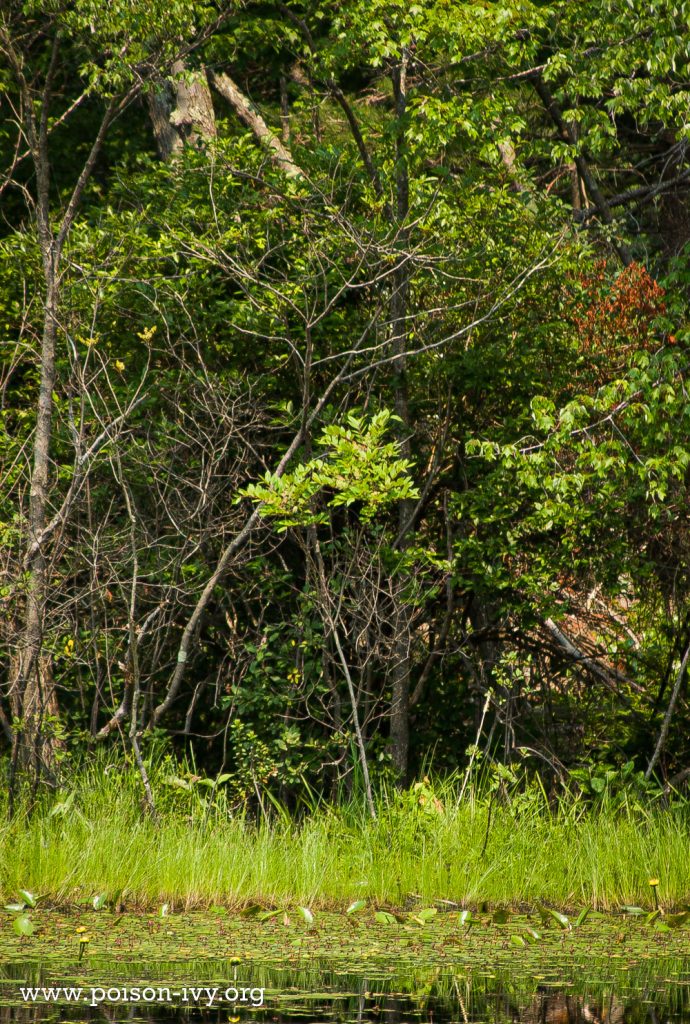
Poison Sumac at Edge of Pond
There are two big clues to this being poison sumac: it is growing right at the edge of the pond, with its roots in water, and it is a small tree, only 10 or 12 feet tall. It is tiny compared to the “real” trees behind it.
For years this was the ONLY actual poison sumac tree I ever saw, and it was pointed out to me by a professional botanist. (This was before the age of smartphone apps that can locate plants as spotted by others.)
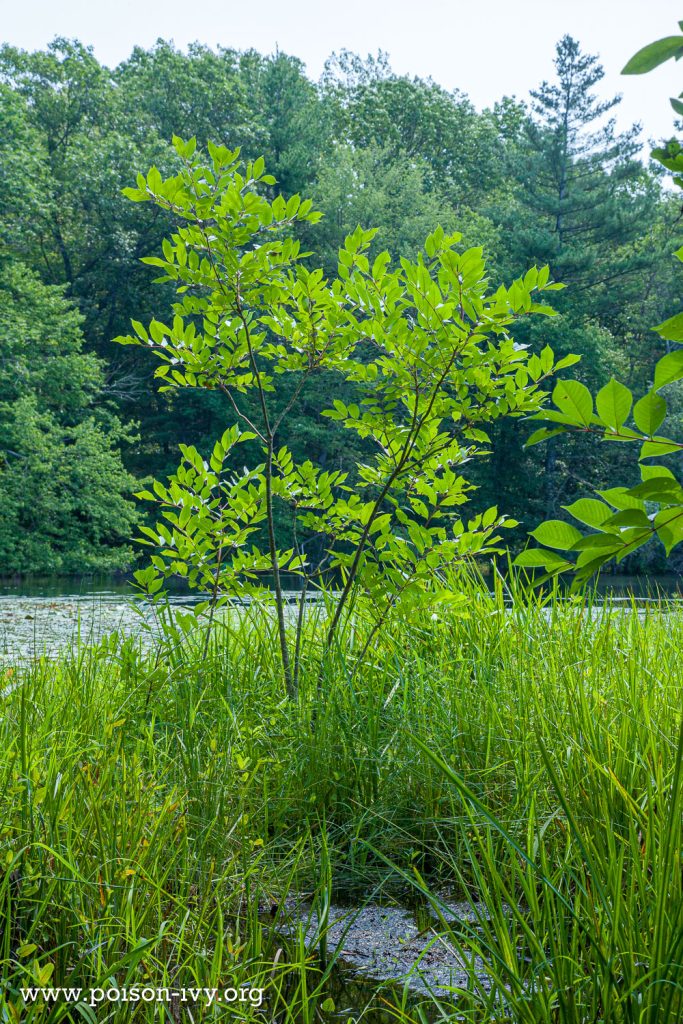
Poison Sumac at Edge of Pond
This is a more lush growth of poison sumac, also at the edge of a pond, with roots right in the water.
Most trees will die if their trunk is in such a wet place; poison sumac requires this much wetness.

Poison Sumac Leaves and Flowers
The leaves of poison sumac are smooth and smooth-edged. The flowers and berries are not dense, but grow in loose strands.
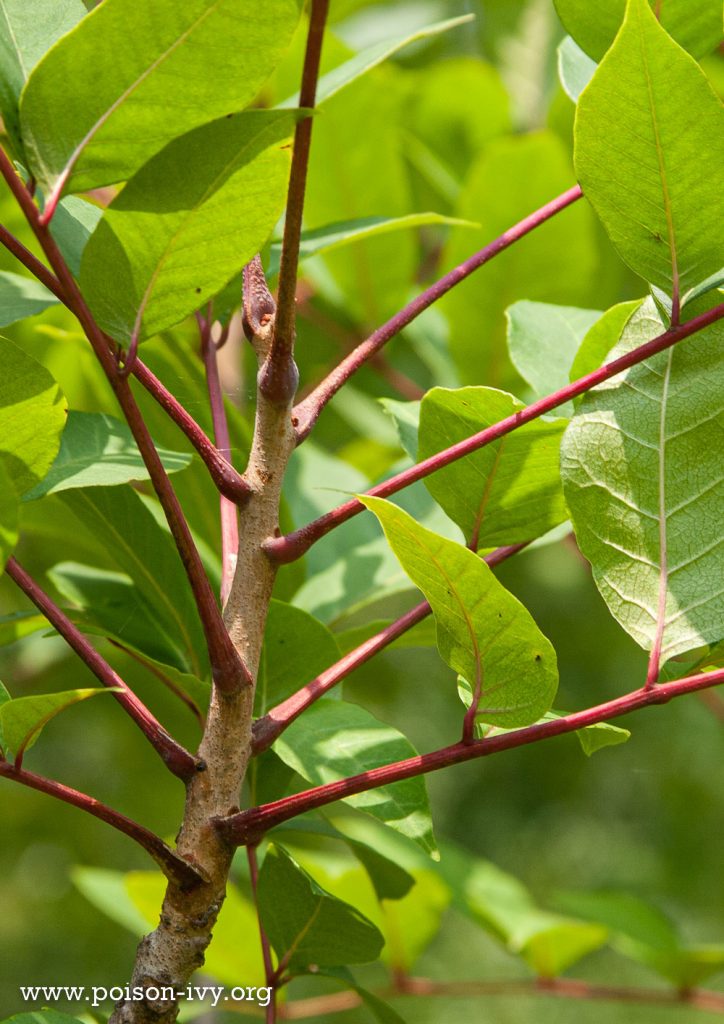
Poison Sumac Red Stems
The stems of poison sumac’s compound leaves are almost always deep red.
And they fall off at the end of the season, leaving the tree quite bare.
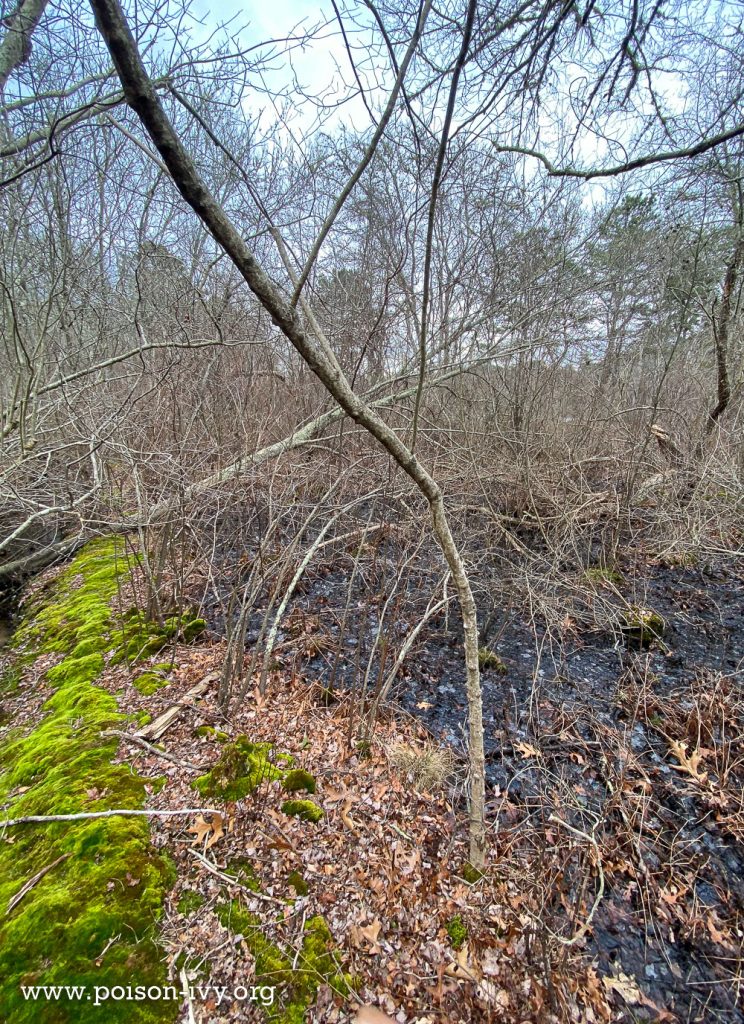
Poison Sumac In Winter
This single, spindly tree is poison sumac in the winter. I could never have spotted it, but it was identified by iNaturalist, and I was able to drive near it and walk right to it.
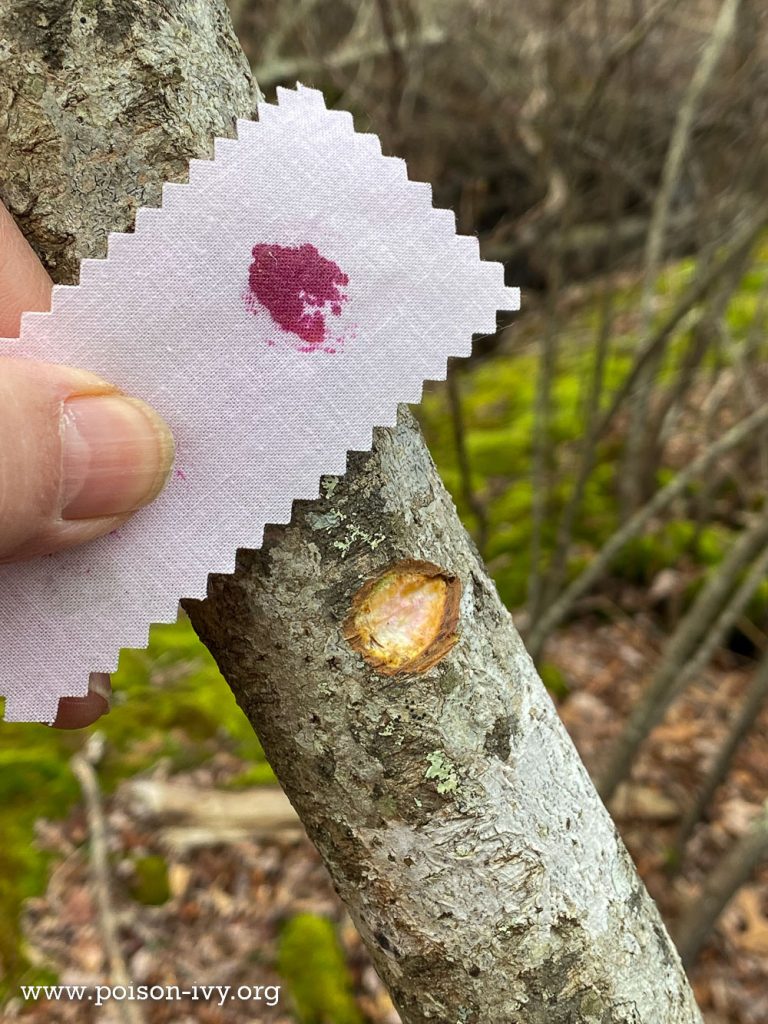
Poison Sumac Verified In Winter
I tested this tree with a SeeLeaf test wipe. Without the test wipe I didn’t see anything that suggested poison sumac other than a smallish, spindly tree.
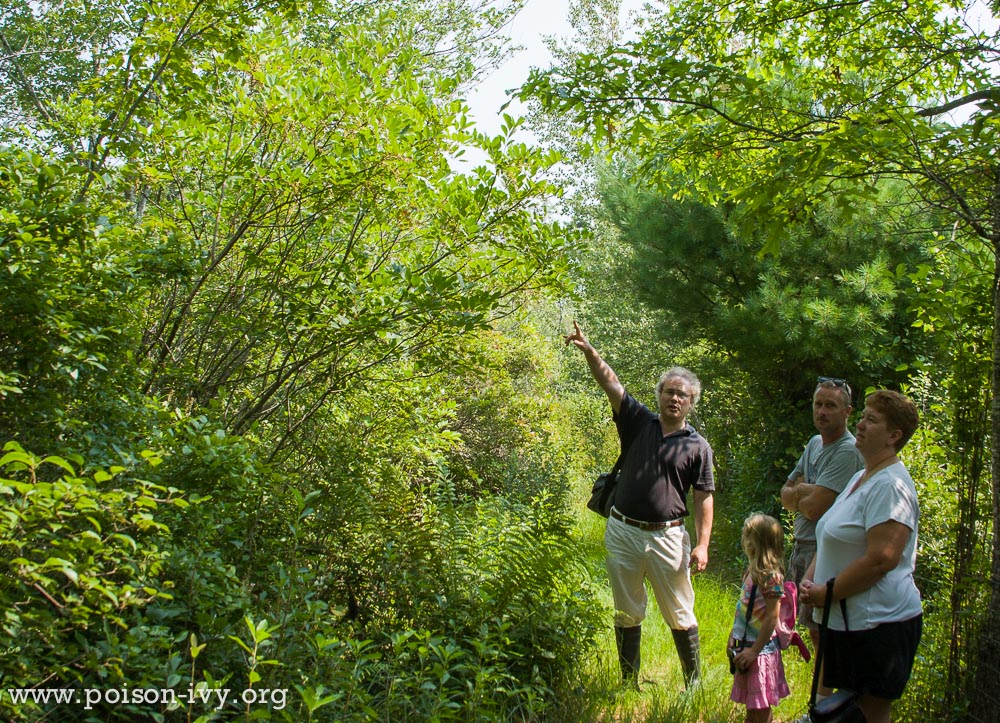
Poison Sumac, Tall As It Gets
Poison sumac is considered a small tree and this is about as tall as gets, about 20 feet maximum.
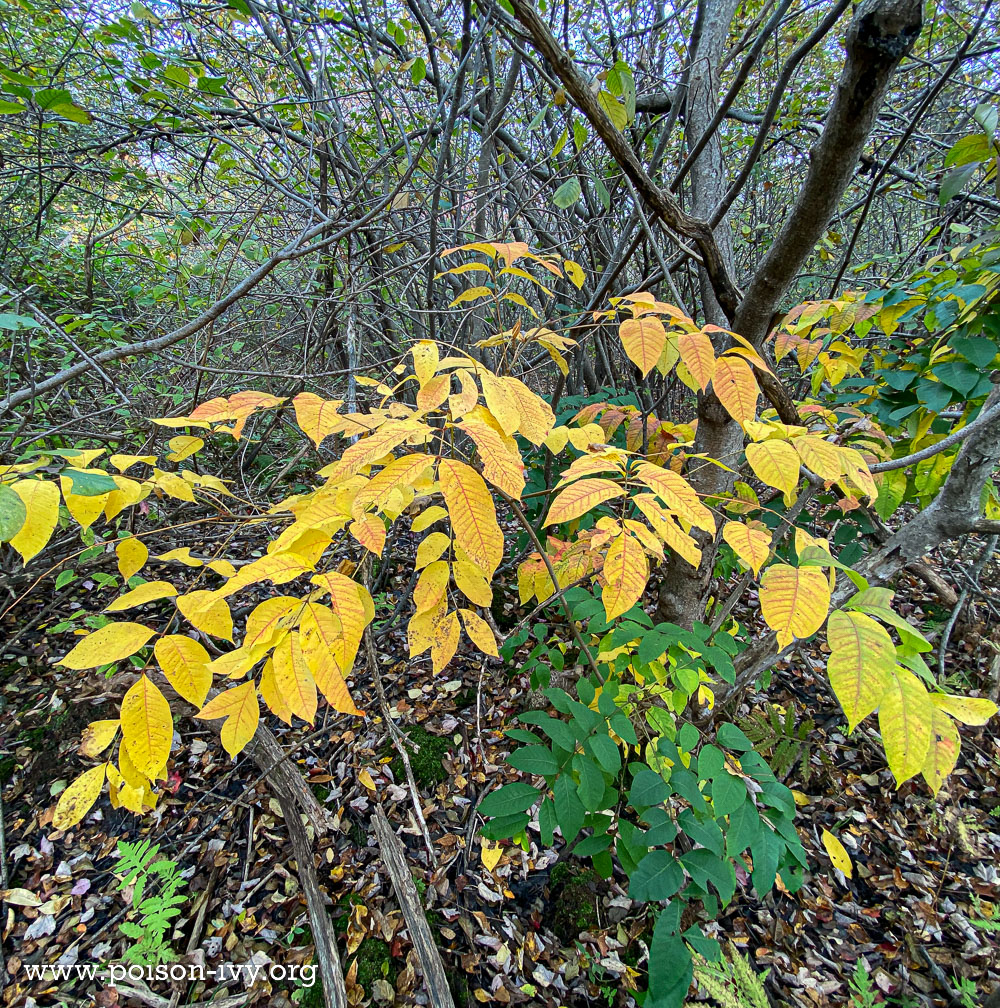
Poison Sumac In The Fall
This little poison sumac tree was spotted by a friend. It doesn’t look much like poison sumac, not tall enough, but it tested positive with SeeLeaf wipes.
